
Osteochondrosis is a degenerative-dystrophic lesion of the intervertebral discs, the cervical spine being the most vulnerable part of the spine, which has an anatomically different structure from closely adjacent adjacent vertebrae and a weak muscular corset. Therefore, even with small additional loads on the neck, displacement of the vertebrae can occur, leading to compression of blood vessels and nerves.
And since the vertebral arteries that are involved in supplying blood to the brain pass through the holes in the transverse processes of the vertebrae in this section, pinching the vertebrae in this section or squeezing the holes by overgrown osteophytes has serious consequences.
What is it?
Cervical spine osteochondrosis is a progressive polyetiological disease, manifested by degeneration of the intervertebral discs and dystrophy of the spinal ligament apparatus.
Occurrence causes
The main causes and prerequisites for the occurrence of osteochondrosis of the cervical vertebra are:
For the successful treatment of cervical osteochondrosis, it is first necessary to establish the cause of the occurrence, the prerequisites that caused its development and eliminate them. Until recently, the disease only occurred in people over 45 years of age. Now that young people are exposed to it, the age group is 18 to 25 years old.
Cervical Spine Characteristics
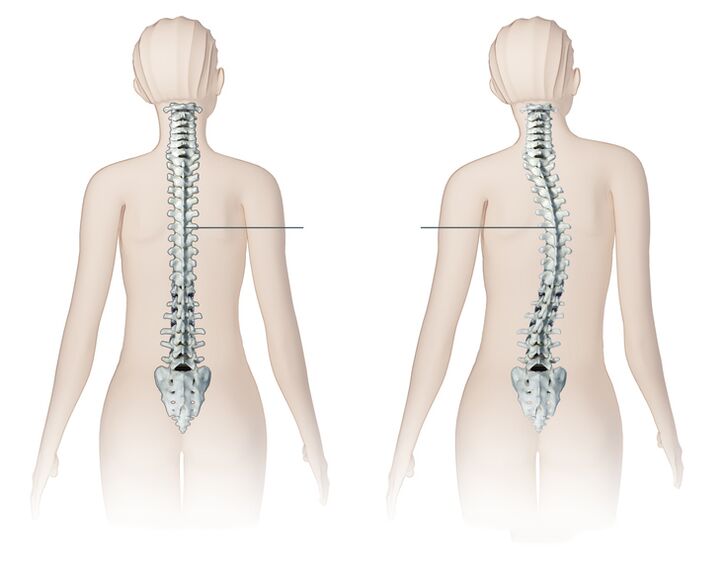
Consider how the cervical region differs from the rest of the spine and that in the process of developing osteochondrosis it is a prerequisite for the development of these syndromes.
- In the cervical region, there are important ganglia (nodules) of the autonomic nervous system.
- In the transverse processes of the vertebrae there are holes that form a channel through which the vertebral artery passes, which supplies oxygen and nutrients to the brain, cerebellum, auditory organs and also to the vertebral nerve. These are prerequisites for frequent clipping of arteries and nerves.
- The cervical spine is the most mobile. It is characterized by all kinds of moves in full. These are prerequisites for frequent infractions and subluxations!
- The intervertebral foramen of the three lower vertebrae is not round but triangular. These are prerequisites for the violation of nerve roots by bone growths, which are formed in osteochondrosis.
- Intervertebral discs are not located between the vertebral bodies along their entire length. On the front, instead of them, there are protruding edges of the vertebrae, which are connected by joints.
Here are the key resources we'll build on, looking at the symptoms and complications of osteochondrosis.
stages of development
The degree of osteochondrosis is determined by the clinical picture and the patient's complaints. The concept of grade should not be confused with the stages of osteochondrosis. The steps will be discussed below.
Symptoms
The severity of cervical osteochondrosis symptoms depends on the degree of destruction of the vertebral structures. Symptoms are aggravated by the growth of bone tissue with the formation of osteophytes, radicular syndrome (root pain when a nerve is pinched), intervertebral hernia (protrusion of the disc into the spinal canal).
The first signs of the disease are periodic headaches in the occiput, pain in the neck, grinding and clicking in the vertebrae when turning the head, and sometimes a slight tingling sensation in the shoulders. Over time, symptoms increase and pain intensity increases.
Pain syndrome is the main manifestation of osteochondrosis. Neck pain can be dull, constant, or sharp, with lumbago below the occiput when turning the head. The entire cervical region or the projection area of the modified vertebra, as well as the collarbone, shoulder, scapula, and heart area may be painful. Restriction of head movement due to pain usually occurs in the morning after sleeping in an uncomfortable position.
The disease leads to compression of the peripheral nerve roots (radicular syndrome) and causes pain along the course of these nerves. Perhaps numbness in the hands or fingers, impaired sensitivity to certain areas of the skin innervated by the pinched nerve.
According to some characteristic symptoms, it can be assumed which vertebrae are affected:
- C1 - sensitivity violation in the occipital region;
- C2 - pain in the occipital and parietal regions;
- C3 - decreased sensitivity and pain in the middle of the neck where the spinal nerve was infringed, possibly impaired tongue sensitivity, speech difficulty due to loss of tongue control;
- C4 - decreased sensitivity and pain in the shoulder-scapular region, decreased muscle tone in the head and neck, possible respiratory disorders, pain in the liver and heart;
- C5 - pain and impaired sensitivity on the external surface of the shoulder;
- C6 - pain extending from the neck to the scapula, forearm, external aspect of the shoulder, radial aspect of the forearm to the thumb of the hand;
- C7 - pain that spreads from the neck to the scapula, back of the shoulder, forearm to the II - IV fingers of the hand, impaired sensitivity in this area.
- C8 - pain and sensory impairment disseminated from the neck to the shoulder, from the forearm to the little finger.
Clicks or snaps during neck movements almost always accompany cervical osteochondrosis seen in all patients. Crunch appears during a sudden turn of the head or when it is thrown back.
Syndromes due to cervical osteochondrosis
The symptoms of cervical osteochondrosis are grouped together, called syndromes. Its presence and severity may indicate a pathology in the cervical spine with a specific location.
A group of common syndromes:
The nonspecificity and the large number of diverse symptoms that accompany this disease make diagnosis and subsequent treatment difficult, as some of them can be a sign of completely different diseases.
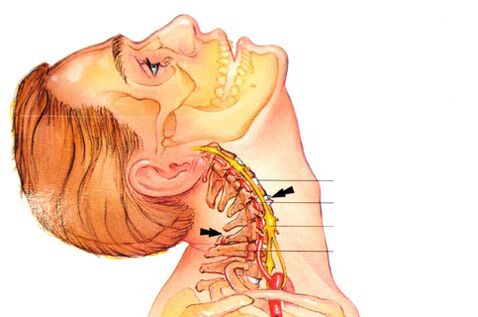
Diagnosis
As with any medical diagnosis, the diagnosis of osteochondrosis is established based on the patient's complaints, medical history, clinical examination, and ancillary research methods. The radiography of the cervical spine is performed in frontal and lateral projections, if necessary in special positions (with the mouth open). At the same time, experts are interested in the height of the intervertebral discs, in the presence of osteophytes.
Of the modern research methods, NMR and CT studies are used, which allow a more precise verification of the diagnosis. In addition to the listed methods of additional research, you may need to consult with related specialists (cardiologist, ophthalmologist, neurosurgeon), and examination by a neurologist is simply vital. The neurologist is engaged in the treatment of osteochondrosis, therefore, after examining the patient, he, at his discretion, will prescribe the minimum necessary examination.
How to treat cervical spine osteochondrosis?
Complex treatment of cervical osteochondrosis may include the following traditional and non-traditional methods: drug treatment, massage, acupressure, manual therapy, physiotherapy, acupuncture, homeopathy, folk remedies, etc.
The main treatment regimen for osteochondrosis is the same for all locations of this disease:
- First you need to relieve the pain.
- Then the swelling will be removed.
- At this stage, it is necessary to normalize blood circulation.
- Strengthening of the muscular corset.
- Improve nutrition and tissue regeneration.
The list of medicines and drugs for the treatment of cervical osteochondrosis at home is very extensive:
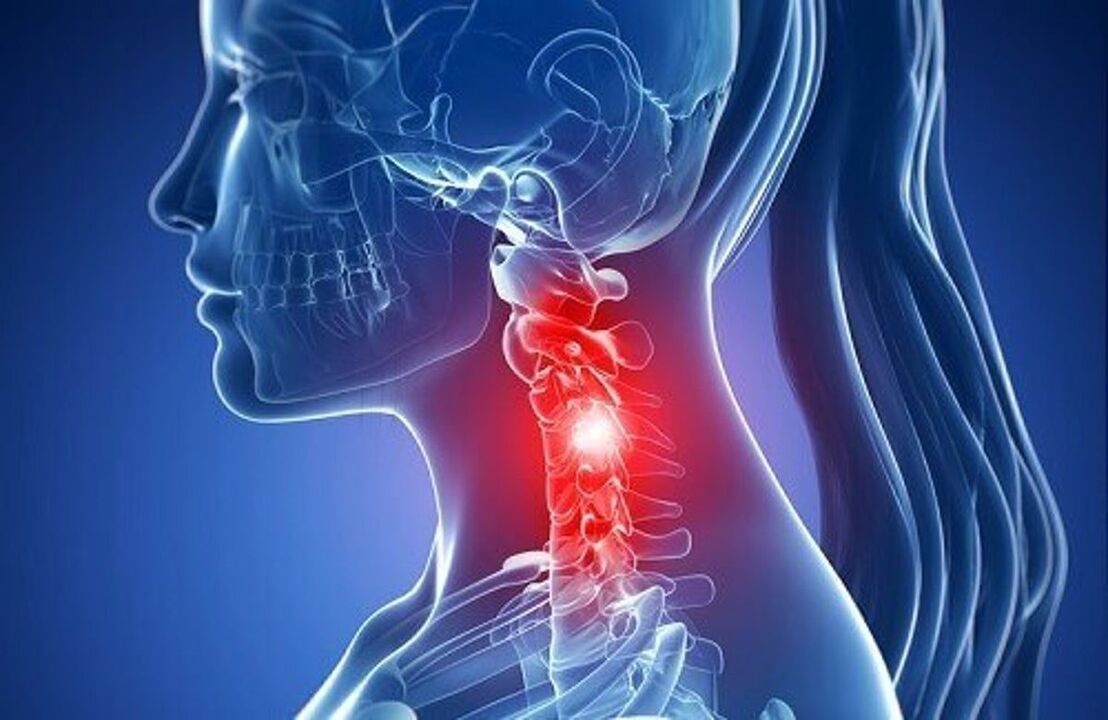
Only a team of good specialists can choose the most suitable therapy, which includes a neurologist, physiotherapist, massage therapist, surgeon and spinal neurologist.
Physiotherapy
Exercise therapy for cervical osteochondrosis should be performed outside of acute exacerbations. The greatest efficiency of this technique is during the recovery period. There should be no discomfort and pain while running the complex!
- Exercise #1 Lying on your stomach, place your hands on the floor, lift your head and torso, your back should be straight. Stay in this position for 1-2 minutes. Slowly lower yourself to the ground. Repeat 2-3 times.
- Exercise number 2 Lying on your stomach, stretch your arms at your sides, turn your head to the left, try to touch the floor with your ear, and then turn your head to the right. Repeat 6-7 times in each direction.
- Exercise number 3 In a sitting position, as you inhale, lean forward and try to touch your chest with your head; then exhale, bend back and tilt your head back. Repeat 10-15 times.
- Exercise #4 Sitting, place your palms on your forehead, apply pressure with your palms to your forehead and your forehead to your palms. Continue this exercise for 30 seconds. Repeat 2-3 times.
- Exercise number 5 Slowly rotate your head first in one direction, then in the other direction. 10 rotations in each direction. Watch out for dizziness. When it appears, the exercise stops.
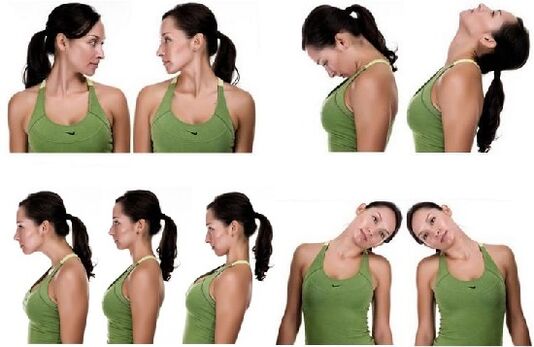
massage therapy
Massage can be performed at home, but with great care not to aggravate and harm the patient. The patient should lie down, place the forehead on the hands and stretch the chin towards the chest. In this case, the neck muscles should be completely relaxed.

Massage is needed to strengthen muscle tone and relieve pain. Depending on the stage of osteochondrosis, a massage technique is selected. However, when performing neck massage, specialists use all the techniques of classic massage: rubbing, caressing, kneading, etc. In cases where the patient has pain in the neck region only on one side, the massage starts in the healthy part of the neck, gradually moving to that part of the collar area where strong painful sensations arise.
Manual therapy
Manual therapy helps to deal with acute and chronic pain, it also increases range of motion and improves posture well. The main methods of manual therapy for osteochondrosis of the cervical spine:
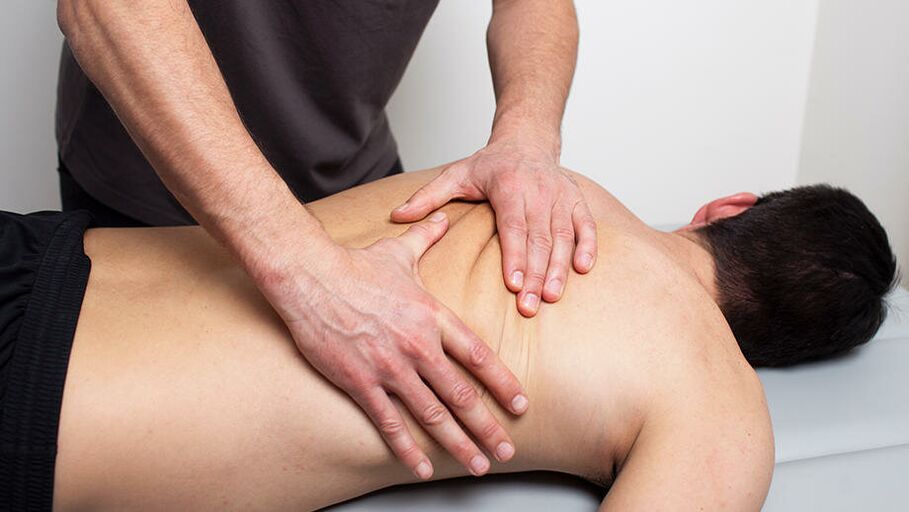
A specialist who practices manual therapy must be fluent in these techniques. Otherwise, any error could cause injury.
Orthopedic pillows
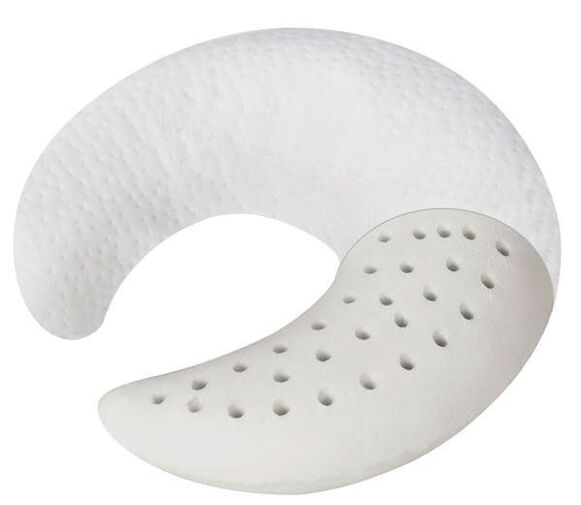
Orthopedic sleeping pillows are an effective preventative measure. In many cases, osteochondrosis is aggravated by additional compression of the cervical artery and nerve roots while sleeping on an uncomfortable pillow. The orthopedic product guarantees a uniform horizontal position of the person during sleep and, therefore, guarantees a physiologically adequate blood supply to the brain.
When choosing a pillow, one must take into account the individual anatomical characteristics of a person and correlate them with the volume and characteristics of the filling. A correctly selected pillow has tangible benefits for a patient with osteochondrosis of the cervical spine.
Physiotherapy
Physiotherapy procedures for cervical osteochondrosis:
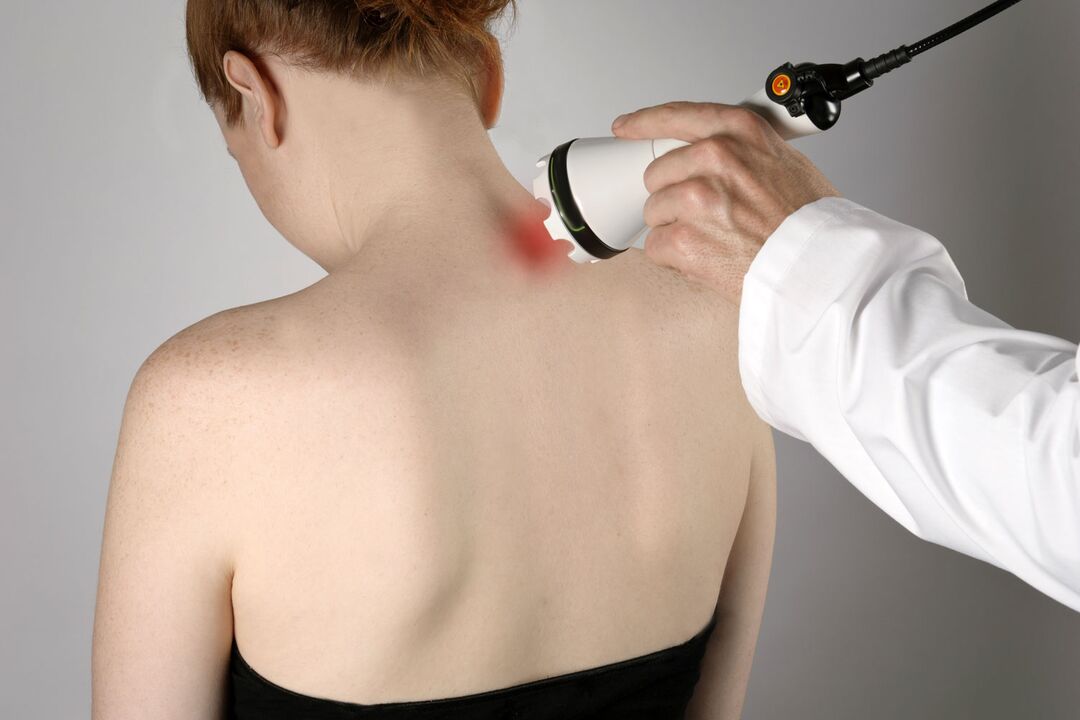
Physical therapy procedures have a beneficial effect on discs and vertebrae in cervical osteochondrosis. In combination with taking medications, combined treatment helps to eliminate the symptoms of the disease. The procedures are performed in a hospital or specialized offices in polyclinics. Before starting the course, it is necessary to consult a doctor, determine the duration of physical therapy, types. It is strictly prohibited to pass it on during an exacerbation.
Collar of Shants
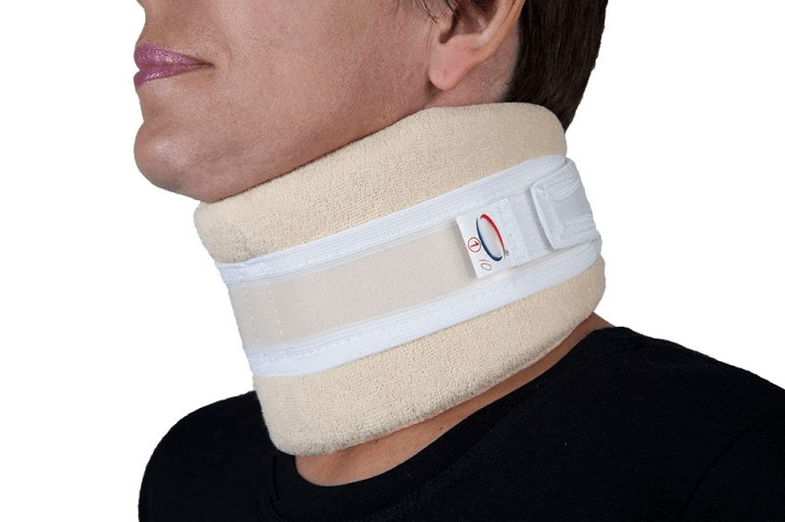
The Shant Collar is a soft, comfortable device that closes with Velcro at the back and is used for cervical osteochondrosis. But not for treatment, but for temporary relaxation and fatigue relief. It cannot be used without taking it off, otherwise the muscles in the neck will stop working and will soon atrophy. If the collar of Shants is selected correctly, the patient feels comfortable and protected.
The collar is selected strictly according to size at the pharmacy or orthopedic shop. Better in the store, because the people who work there, as a rule, know your business and the product's characteristics very well, which means that they can help in each specific case.
folk remedies
If the pain of osteochondrosis of the spine becomes unbearable and regular, you will agree to anything to stop it, and here traditional complex treatment will be successfully complemented with alternative methods.
- insist celery root (5 grams per 1 liter of boiling water) for 4 hours, drink a tablespoon before each meal;
- honey compress, for which we take 2 teaspoons. honey and 1 mummy pill. We heat the components in a bain-marie, spread them on a cloth and apply them in the cervical region, that is, the neck, at night;
- in case of acute pain, the cultivation of horseradish in the country helps me. I just wash his sheet, pour it with boiling water, cool it down a little, apply it to the neck and wrap it with a thin handkerchief for the night - in the morning it's enough to live and work;
- we insist on chamomile flowers in vegetable oil for two days, preheating to a boil (for 500 ml of oil, 30 grams of a plant are needed), rub into painful areas;
- A potato compress with honey also helps, for this the harvested root must be grated and mixed with honey in the same amount, applied to a large neck at night, used regularly, at least once a week.
Prophylaxis
As usual, proper prophylaxis will help prevent osteochondrosis of the cervical spine, but, of course, all physical exercise should be used regularly, otherwise there won't be much benefit from "recurrent" exercise.
It remains to remember simple rules:
- eat more foods high in calcium and magnesium. These are fish, peas, vegetables, nuts, cheese, herbs, but it is best to avoid sugar, flour, smoked and spicy foods.
- Practicing sports regularly, especially swimming, water aerobics, stretching gymnastics and vertebrae flexibility is also indicated to prevent osteochondrosis, which can be practiced at home.
- during sedentary work, at least a few times a day, do a special set of exercises, an example of which is in the video.
- choose a good orthopedic mattress and pillow that is ideal for the neck, supporting your head in a dream in the correct anatomical position (yes, your favorite huge feather pillows won't go away with back problems! ).
If you already have this diagnosis, the patient should spare the spine, namely:
In conclusion, I would like to say that a child threatened with osteochondrosis (father and mother already have it) and an adult who acquired the disease throughout life are simply obliged to take preventive measures so as not to become incapacitated. and not being on the operating table, because this operation is quite difficult and requires long-term rehabilitation. Also, it is not always possible, as there are inoperable cases, so it is better to protect your health early on, as long as the discs are intact and unnecessary growths do not compress the blood vessels.



















